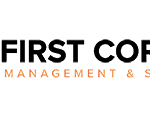
As you evaluate contract management options for your business, you’re likely torn between the familiar, on-premise solution of SharePoint and the cloud-based flexibility of a SaaS model. You’re not alone – many businesses struggle to weigh the pros and cons of each approach. SharePoint offers a high degree of customization and integration, but at what price? Meanwhile, a cloud-based SaaS solution promises scalability and cost savings, but can it truly deliver? You need to consider your business objectives, contract management requirements, and total cost of ownership to make an informed decision – and that’s just the starting point.
Understanding SharePoint Strengths
When you’re evaluating sharepoint contract management solutions, you likely consider SharePoint as a viable option.
As a widely adopted platform, SharePoint offers a robust set of features, including document management, workflow automation, and collaboration tools.
You can create custom contract templates, track versions, and set access controls to ensure that sensitive information remains confidential.
SharePoint’s search functionality also allows you to quickly locate contracts and related documents, making it easier to manage your contract portfolio.
Additionally, SharePoint integrates seamlessly with other Microsoft products, such as Office and Outlook, making it a convenient choice for organizations already invested in the Microsoft ecosystem.
You can also leverage SharePoint’s reporting and analytics capabilities to gain insights into contract performance and identify areas for improvement.
SaaS Solution Advantages
Your contract management needs a flexible and scalable framework, and that’s exactly what a cloud-based SaaS solution provides.
It easily adapts to your business’s unique needs and grows with you, ensuring you’re always equipped to manage your contracts efficiently.
With a SaaS model, you don’t have to worry about the underlying infrastructure, allowing you to focus on what matters most – your contracts.
You’ll also appreciate the cost-effectiveness of a SaaS solution.
There’s no need to invest in hardware, software, or maintenance, which can be a significant cost savings.
Additionally, you’ll enjoy automatic access to the latest features and security patches.
This not only saves you time and resources but also ensures you’re always compliant with the latest regulations and industry standards.
With a SaaS solution, you can rest assured that your contract management is in good hands.
Contract Management Requirements
Effective contract management demands specific requirements that cater to your organization’s unique needs and goals.
You need to identify and prioritize these requirements to ensure your contract management solution meets your business objectives.
Start by evaluating your current contract management processes, identifying pain points, and areas for improvement.
Consider the types of contracts you manage, the frequency of contract renewals, and the number of stakeholders involved in the contracting process.
You should also think about the level of automation you need, the reporting and analytics requirements, and the level of security and compliance your organization demands.
Additionally, consider the scalability and flexibility you need to accommodate your organization’s growth and changing needs.
Hidden Costs and Pitfalls
Hidden costs and pitfalls can lurk in the shadows of your contract management solution, threatening to derail your efforts and drain your resources.
You may think you’ve found the perfect solution, but it’s essential to dig deeper to avoid costly surprises. For instance, if you opt for an on-premise solution like SharePoint, you’ll need to factor in the costs of hardware, software, and IT personnel to maintain and update your system.
These costs can add up quickly, and you may find yourself spending more time and money on IT support than on your actual contract management needs.
Additionally, customization and integration with other systems can also lead to hidden costs. You may need to hire external consultants or developers to tailor your solution to your specific needs, which can be a significant expense.
Furthermore, if you’re not careful, you may end up with a solution that’s not scalable, leading to further costs down the line.
Making an Informed Decision
As you weigh the pros and cons of SharePoint against a SaaS contract management solution, you’re likely considering what’ll work best for your specific needs.
You’ve probably thought about the total cost of ownership, the level of customization required, and the IT resources needed to implement and maintain each option.
Now it’s essential to think about your business goals and how they align with each solution.
Consider your contract management process and how it will evolve over time.
Will you need to scale up or down quickly?
Do you require robust reporting and analytics?
Are there specific compliance or regulatory requirements you must meet?
Answering these questions will help you determine which solution is the best fit for your organization.
It’s also crucial to assess the level of support and training provided by each vendor.
Conclusion
You’ve weighed the pros and cons of SharePoint and SaaS contract management solutions. Now, consider your business objectives, contract requirements, and total cost of ownership. Don’t forget to factor in hidden costs and potential pitfalls. By making an informed decision, you’ll choose the solution that best fits your needs, streamlines your contract management process, and ultimately drives business growth.


